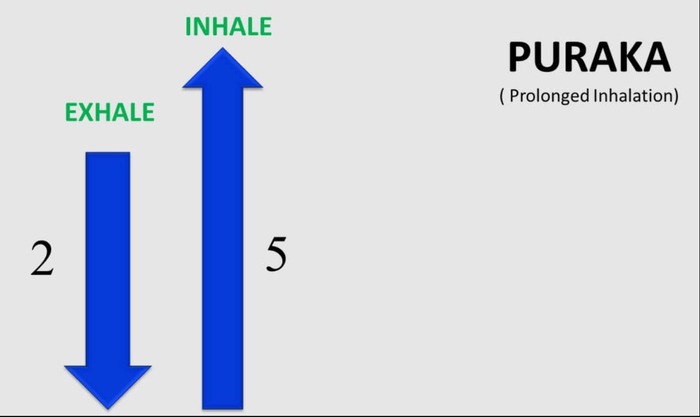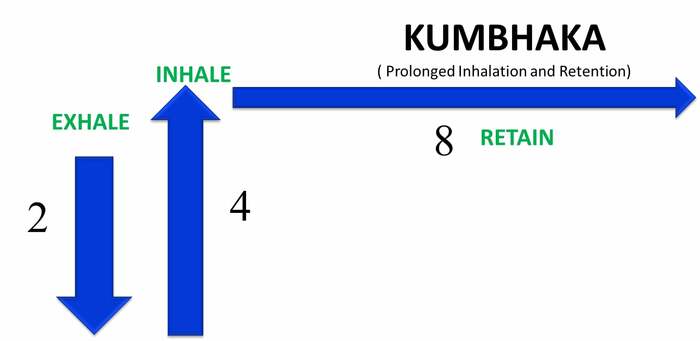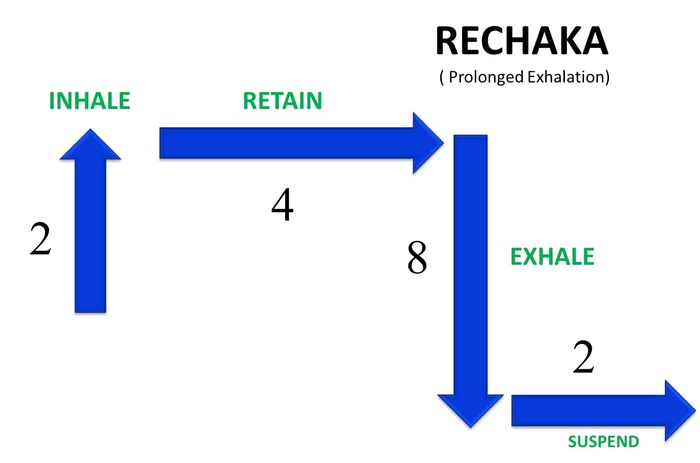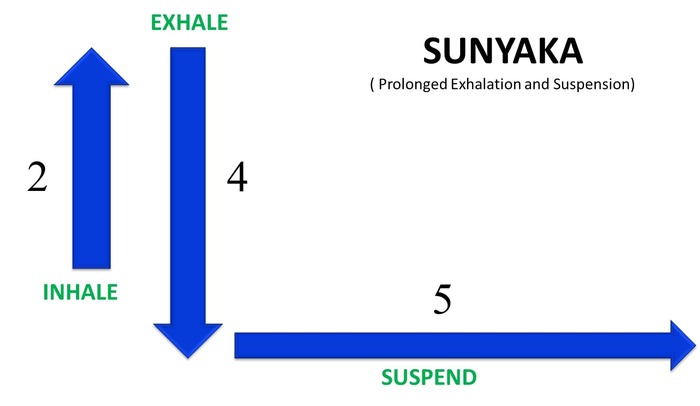Author: Randeep Singh / go to all Techniques of Yoga articles
Basic four pranayama ,Ask a layman
what he understands by Breathing. Breath,
in ( Inhalation) & breath out (exhalation)
is breathing,
spat comes the answer. As per Yoga,
there are more dimensions to the breathing process,
than these two activities general population is
normally aware of. In order to fulfill the purpose of the Pranayama practice one needs to understand these dimensions in detail.
Patanjali describes Pranayama as the pause or the rest period after an inhalation seizes and before an exhalation begins. Then there is another pause after an exhalation seizes and before an inhalation commences again. Yogic Pranayamas are mainly centered around these two pauses cycling between the inhalation and the exhalation.
Thus a Yogic Pranayama has four sections: Inhalation known as Puraka; Pause after inhalation or holding of the inhaled air known as Kumbhaka; Exhalation is known as Rechaka; Pause after exhalation or suspension after the air is exhaled and before next inhalation begins, also known as Sunyaka.
Thus the breathing process as per Yoga can be depicted as below.
Inhalation ( Puraka) —- Retention Holding ( Kumbhaka) —- Exhalation ( Rechaka) —- Suspension
( Shunyaka)
The below given four techniques are based on these four stages of the breathing process. when individually mastered they bestow the benefits of a healthy breathing on the practitioner of these Pranayamas. For all the four techniques explained below the digits depicted against the arrows are the number of counts that process needs to be done too.
As per the time unit measuring meter for pranayama – Matra– one count is equal to 1 second and the practitioner can increase counts @ one count per week keeping the overall proportion the same. The counts shown in the illustrations for each Pranayama are basic counts for the beginners. A maximum of 10 rounds is recommended for a single sitting on each Pranayama explained.
Use all the three muscles: Diaphragm, Clavicular, and Intercostal for doing these Pranayama exercises.
Puraka ( Prolonged Inhalation) – Basic Four Pranayama

For doing this pranayama sit in any meditative posture with your shoulders, facial muscles and elbows relaxed. Place your hands on the thighs above the knees. Close your eyes, keep the spine erect and the chin remains parallel to the ground. Start inhaling after a short exhalation ( just to provide a lift).
The inhalation has to be smooth and bereft of jerky movements throughout this Pranayama practice. Continue inhaling till you can in this manner or until no part of the body experiences any strain. The moment strain sets in, release the effort (that’s your inhalation capacity’s limit) and breathe normally for a round or two. Beginners can start with 2 rounds as exhalation and then 5 rounds as inhalation.
Persons suffering from Cardiac issues, Hypertension, and pregnant women should avoid this Pranayama exercise.
This Pranayama exercise would force open every unused alveolus ( Air Cell) in the lungs along with stimulating the sluggish ones. Since the inhalation process is prolonged here, more oxygen is ingested and made available for the body cells to be used, boosting the overall health in general. it also helps increase the breathing lung capacity.
Kumbhaka (Prolonged Inhalation and Retention)

The preliminaries and the sitting posture remains the same as explained above in context to Puraka Pranayama above.
Begin by exhaling for a short duration( just to provide the kick lift to the consequent inhalation) of 2 counts and immediately after start inhalation. Inhale to the count of 4 and then retain or hold to the count and 5, after which release or exhale the held up air in a smooth manner without any jerk in the process.
Persons with Cardiac issues, Hypertension, Asthma, Bronchitis & Abdominal Inflammation, Pregnant women who have reached the sixth month of pregnancy, Children under the age 12 years should avoid doing Kumbhaka Pranayama
Regular practice of Kumbhaka Pranayama will establish the regulation of breath improving the regular respiration of the practitioner. This Pranayama aids with concentration and intrapulmonary and intrathoracic pressure and overall health. increase lifespan. Along with increasing the lung capacity it also helps reduce the strain on the circulatory system. The practitioner also experiences improved
More energy is released into the system as Glucose metabolism gets a kick due to the practice of Kumbhaka Pranayama. It also helps with increased positivity and sattvic state of Mind.
Rechaka or Prolonged Exhalation

The preliminaries and the sitting posture remains the same as explained above in context of Puraka and Kumbhaka Pranayamas. For Rechaka beginners can start by inhaling for 2 counts, holding for 4 counts and then exhaling for 8 counts. Draw your abdomen inwards while exhaling and when the exhalation is complete suspend for 2 counts, then release the abdomen. Take some normal breaths between two rounds of Rechaka Pranayama.
Persons with severe cardiac problems (the Controlled Cardiac problem will benefit from this Pranayama), Hypertension, Pregnant women and children under the age of 12 years must avoid doing this Pranayama.
A large volume of Carbon Dioxide gets eliminated by doing Rechaka Pranayama regularly, this eases nerve Asthmatics gain from this practice as exhalation issues are a corollary to Asthma. It also helps reduce blood pressure and facilitates the feeling of let go in general. Rechaka stimulates and inspires the brain. It also exercises the Diaphragm and restores its effectiveness related to ventilation of the lungs.
Sunyaka or Prolonged Exhalation and Suspension

All the preliminaries and the body position remains the same as mentioned for the other three Pranayamas. Sunyaka Pranayama is also known as Vaccum Breathing.
Start by inhaling to 2 counts. Suspend the breath for 5 counts after exhaling for 4 counts. Once the suspension is complete release it by inhaling in a smooth manner.
Persons with severe cardiac issues, Abdominal ulcers, abdominal surgeries, low blood pressure conditions and children under the age of 12 years must avoid doing Sunyaka Pranayama.
This Pranayama preserves the tone and elasticity of the Diaphragm. It is extremely useful for week Stomach and weak Colon. Regular practice of Sunyaka Pranayam helps correct conditions like inflated lungs and Tachycardia. It induces thoughtlessness. Blood pressure is reduced by doing Sunyaka, along with abdominal organs. Elimination of toxic Carbon Dioxide. It helps to improve blood purification & circulation by applying internal pressure on the abdominal organs.
